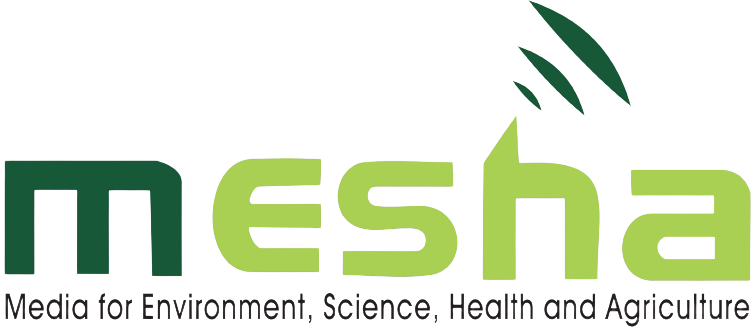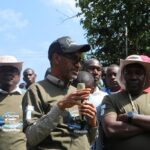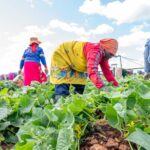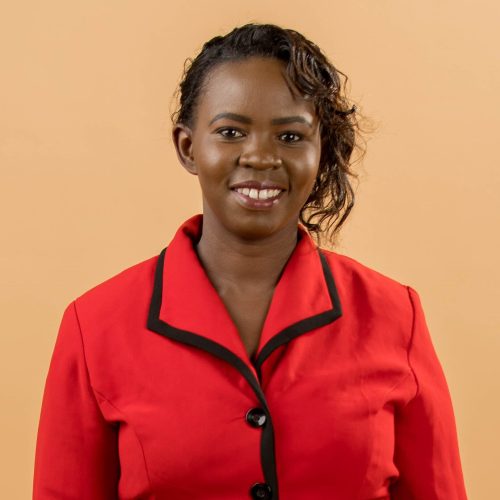By Anne Atieno I annatieno1996@gmail.com
The pressures of marriage almost had Millicent Nyaram, 26, taking her life. She encountered violence, committed by a man she thought would protect her.
It all began after she sat her Form Four examinations but had no money to proceed to the next level of her studies.
“My mother fell ill, and I had no one to support my education. Neither was any family member concerned about her illness,” she recalls.
Nyaram had been living with her mother since her father’s death in the year 2000. To survive, she sold almost all their belongings to buy food and for upkeep. Worse still, she was also forced to engage in premarital sex to raise money to support her siblings and pay her mother’s medical bills.
“Unfortunately, I got pregnant and the situation at home worsened. An aunt visited our home and when she saw the desperate state we were in, offered to go with me and the baby to her place,” she says.
When she got to her aunt’s place, the story changed. She was instead given off to a man who ‘married’ her. Nyaram, who hails from Gemba in Homa Bay County had thought that the man would fulfil her dream of going back to school. However, he frustrated her so much that she considered taking her life.

Luckily, before she could do the unthinkable, a community health volunteer got wind of her situation and connected her to a social worker who enrolled her to the Dreams programme that gave her a new lease of life.
The Determined, Resilient, Empowered, AIDS free, Mentored and Safe (DREAMS) programme is run by United States Agency for International Development (USAID) with funding from the U.S President’s Emergency Plan for AIDS Relief (PEPFAR).
Nyaram received HIV Testing and Counselling (HTS) services and learnt how to protect herself from HIV. DREAMS program promotes economic empowerment among adolescent girls and young women who are at risk of contracting HIV.
“We were also trained on entrepreneurial skills. I learnt how to run my fresh juice vending business, which I had been running before I joined the programme, professionally,” she explains.
In 2021, the mother of two was enrolled in a training at Eye Rafiki in Eldoret. After the training, LVCT, Dreams program and Eye Rafiki helped her secure a job at Othoro Level Four Hospital in Homa Bay County, where she currently works as an ophthalmic optician. From her earnings, she support her ailing mother, pays school fees for her children and rent, while sustaining herself.
“I was unable to support my family but through the empowerment, I can do a lot, including educating adolescent girls and young women on how to take care of themselves,” she told this writer.
Unlike Auma, Paullete Awuor had chosen to get married at a tender age.
“The only option I had then was getting married,” she recalls.
However, when she became expectant two years later, hell broke loose. She got frustrated by her husband who wanted her to abort their unborn child. She could not return home got fear of rejection from her parents. Many times, Awuor contemplated taking her own life.
“The Dreams Program was my life saver when I was at my lowest moment,” she says.
Through the programme, she was empowered financially and could sell soap and vegetables to earn a living.
Awuor did this while pregnant and after delivery, got an opportunity to be a youth ambassador and social worker. She also took a HIV test to know her status and how to protect herself from contracting the virus. Awuor uses her experience to teach adolescents and her peers on engaging in healthy sexual relationships.
“When we do peer to peer talks about sex, the community feels that it is a taboo topic,” she says.
To make it easier for adolescents and young adults to come out freely, she wants the government to enact a youth-friendly policy.
Auma and Awuor are among hundreds of adolescents and young women who have experienced sexual gender-based violence, teenage pregnancies and exposed to the risk of contracting HIV.
The Ministry of Health estimates that 98 new HIV infections occur among adolescents aged 10-19 every week in Kenya. Some 5,890 () of adolescent girls who experienced sexual and gender-based violence were provided with Post Exposure Prophylaxis (PEP) to prevent HIV infection, out of whom 236 (4 per cent) contracted the virus.
Some 1,665 of these adolescent girls reported being pregnant four weeks after the sexual and gender-based violence.
Data released by the National Syndemic Disease Control Council (NSDCC) states that in 2021, Kenya recorded 316,187 adolescent pregnancies out of which 294,364 were among girls aged between 15 and 19 years. Some 21,823 accounted for girls aged between 10-14. In 2023, the country had 254,753 adolescents aged 10-19 attending antenatal clinic.
A public support officer at the National Syndemic Disease Control Council (NSDCC) Caroline Kinoti told a media science café organised by Media for Environment, Science, Health and Agriculture in Homa Bay town that the government is focused on ending the triple threat facing adolescents.
She noted that though the number of new HIV infections is falling, those of adolescents with new HIV infections are growing. In 2022, the country recorded 22,000 new HIV infections, out of which 4,464 were recorded among children aged between 0-14 years, while 3,244 cases were among those aged between 10-19 years.
The number of adolescents aged between 15-24 with new HIV infections stood at 7,304 accounting for 41 per cent of the cases reported in 2022. Homa Bay County recorded the highest prevalence of 16.2 per cent as of 2022.
“We have to end the triple threat. We must walk together and leave no one behind in this fight,” Ms. Kinoti says.
The NSDCC’s four priorities include accelerating the end of new HIV infections, teenage pregnancies, sexual gender-based violence and addressing vulnerability.
Ms. Kinoti vouches for economic empowerment as one of the ways of ending vulnerability, highlighting 12 commitments which are geared towards ending the triple threat by 2030.
They are reducing new HIV cases, increasing the age of sexual debut among adolescents and young people, reduction in pregnancies among adolescent girls, increasing re-entry to school, boosting access to sanitary pads, proportion of pupils transitioning to secondary school and reducing sexual and gender-based violence. Others are increasing knowledge, awareness, and actions to end triple threat, drugs, alcohol, and substance use disorders.

Uptake of Human Papillomavirus (HPV) vaccine among adolescent girls and enhancing the proportion of young people transitioning to gainful employment are also part of the commitments; as well as reducing substance use disorders and improved policy and legal environment to prevent triple threat complete the list of the 12 commitments.
Douglas Bosire from NSDCC says there is a growing cohort of young people getting infected and living with HIV.
“If the numbers keep on growing, the country will have to invest more in treating it. It is a threat to socio-economic development,” he says.
Homa Bay County AIDS and STIs Coordinator (CASCO) Stephen Omondi says they are on the journey towards triple threat elimination.
“We have identified strategies for HIV prevention, among them management of new infections and deaths. As Homa Bay County, we are on the path to self-reliance,” Omondi says.
The new HIV infections have been attributed to sexual relationships.
“When we talk about sexual gender-based violence, teenage pregnancy and HIV, we have to address them together,” he says.
UNAIDS’ Adviser Equality and Rights for All in Kenya Ludfine Bunde says they cannot end HIV by 2030 through treatment alone because there are other systemic issues such as teen pregnancy, early marriage and SGBV that need to be dealt with.
“We need to work with the government to address the triple threat. Together we can bring the sustainable solutions,” Ms. Bunde says.
Bunde who highlights their determination to ensure that all children are able to reach their full potential says ending the triple threat has many benefits which include transition to education and work.









